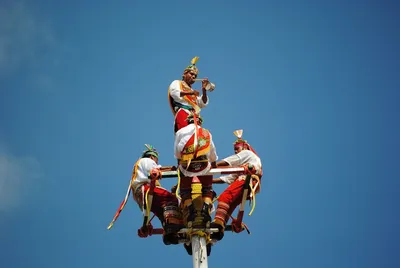
Voladores de Papantla (Flyers): A Must-See Spectacle in Veracruz
Voladores de Papantla (Flyers): A Must-See Spectacle in Veracruz
Papantla is a charming, Magical Town in Veracruz, a sanctuary of typical dances, rich in artistic and culinary traditions, and an ancient pre-Columbian Totonaca city seat.
The Totonacs arrived from northern Mexico and founded El Tajín, a city that may have been the capital of this pre-Columbian civilization.
During colonial times, it was first called Alcaldía Mayor de Papantla and then Villa de Santa María de Papantla.
In August 1910, it was granted the title of “city,” Papantla de Hidalgo.
Papantla’s public spaces are exuberant in murals, monuments, and buildings of interest.
In 2012 the town regained its Pueblo Mágico title, which it had earned based on its attractive tangible and intangible heritage – Read more about Magical Towns.
Where is Papantla Veracruz?
Veracruz city is 228 km from Papantla, while Tuxpan is 82 km, Poza Rica is 110 km, the state capital, Xalapa, is 205 km, Cordoba is 340 km, and Orizaba is 445 km.
If you’re going from Mexico City to the Magical Town, you must travel 335 km northeast by the federal Highway 132D.
Weather
Papantla, Veracruz, has a tropical climate due to its latitude and low altitude, only 191 meters above sea level.
The average annual temperature is 24° C, which rises to 26 to 28° C in the hottest period (April to September), although it can sometimes go above 32° C.
The coolest months are December, January, and February when temperatures drop to around 15° C (59° F).
Papantla receives 1,200 mm of rain annually, most falling in June-October.
Main attractions in Papantla Veracruz
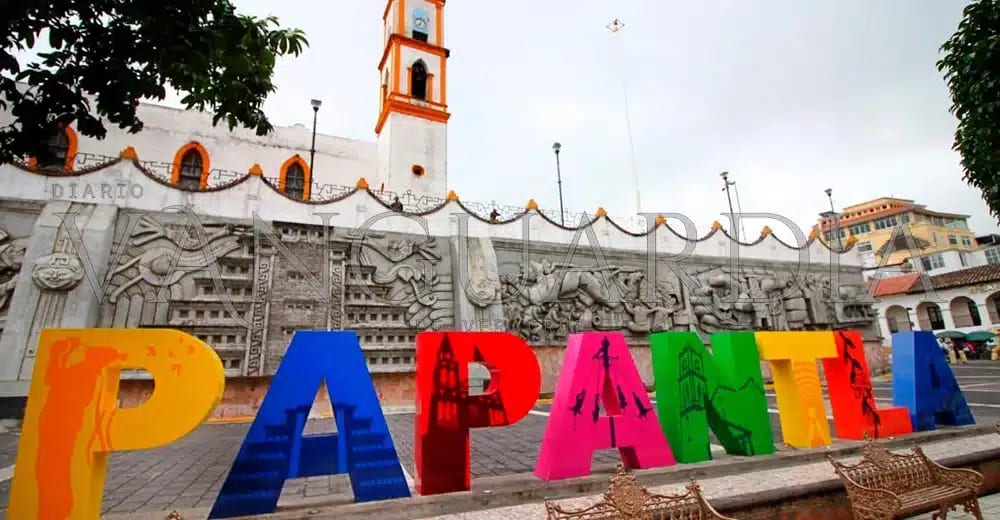
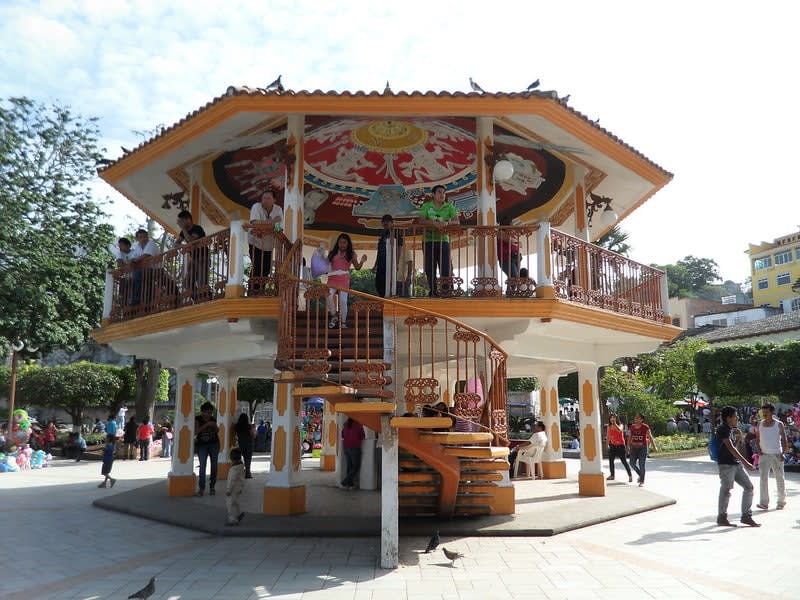
This Magical Town stands out for its religious buildings, monuments, murals, and traditions surrounding the Voladores de Papantla (the Flyers) and the cultivation of vanilla.
The Temple of Our Lady of the Assumption, the Church of Christ the King, the Municipal Palace, and the Israel C. Tellez Park are among the buildings.
Papantla stands out for its murals and artistic monuments, among which the sculptural mural Homage to the Totonaca Culture and the Monument to the Flyer, whose dance is the pre-Hispanic symbol of the town.
The archaeological zone of El Tajin is one of the most important legacies of the Totonaca civilization. A denomination of origin protects the aromatic Papantla vanilla.
Parish of Nuestra Señora de la Asunción
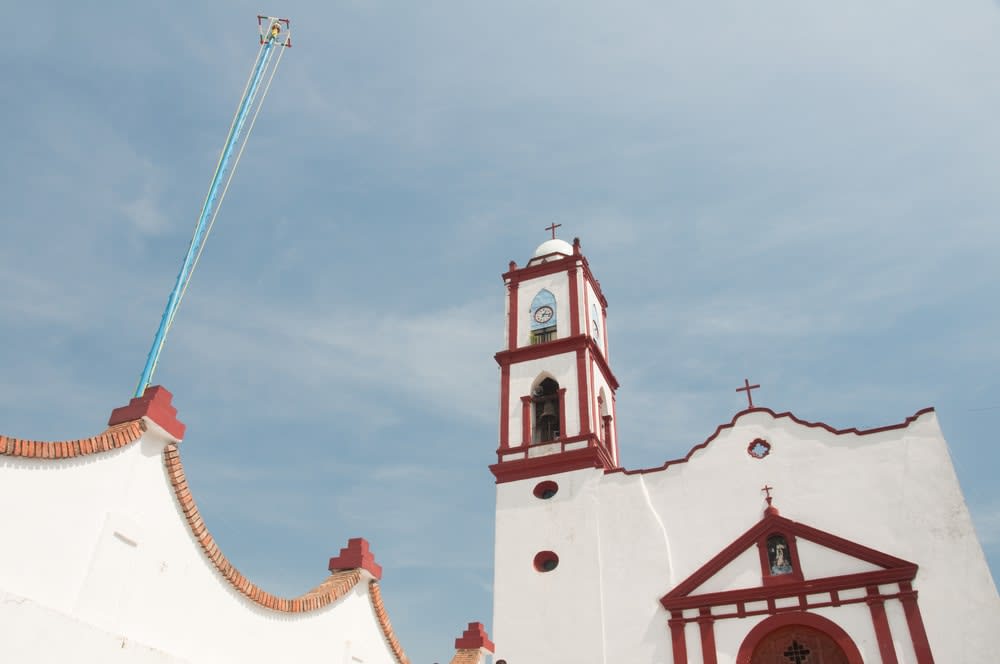
This simple church started by the Franciscans in the 16th century, has a 30-meter high tower added in 1879 and a clock placed in 1895 that still works.
During the Mexican Revolution, it was used as barracks by Pancho Villa’s forces.
The image of the Virgin of the Assumption has an almost implausible history since it arrived floating on the coasts of Tecolutla, with an indication in the box that its destiny was Papantla.
Visit the Church of Christ the King
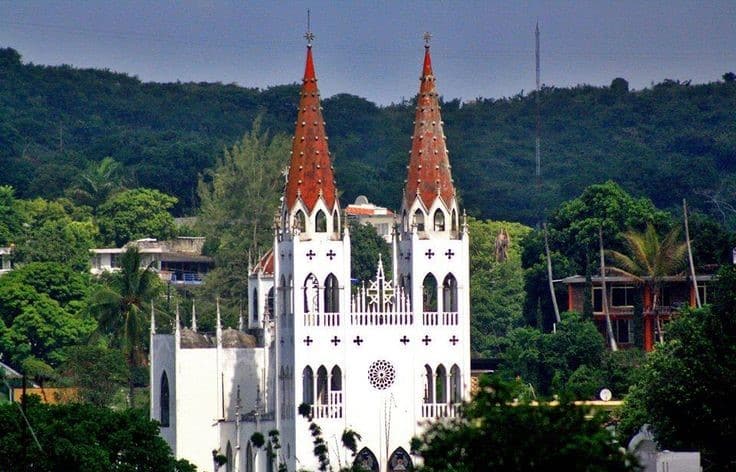
This neo-Gothic chapel was erected in the mid-twentieth century, similar to the Cathedral of Notre Dame in Paris.
It is designed with ribs, pointed arches, rose windows, and other architectural elements reminiscent of the leading European Gothic religious monuments.
The celebration of Christ the King in November is very colorful, with music and Totonaca dances, and there is an emotional moment when the participants shout in one voice, “Viva Cristo Rey” (Long live Christ the King).
Papantla Veracruz Municipal Palace

The original version of the Papantla Municipal Palace was built in 1910.
It ran for five years until Pancho Villa’s forces destroyed it in 1915 during the Mexican Revolution, and it was rebuilt in 1929.
The building of neoclassical lines, with a classic pediment facade, is in the city’s center.
The Main Square Park
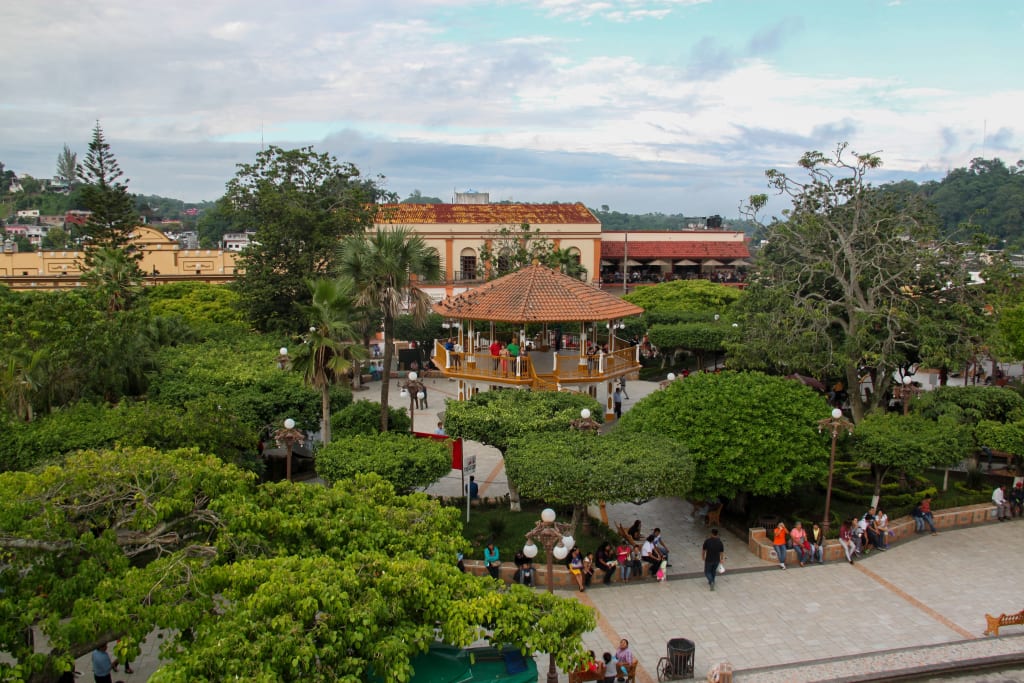
This park in downtown Papantla Veracruz is the heart of the city’s activity.
It has a striking kiosk with a mural on its ceiling called “The Destruction of Men.” In a planter facing east is the sculpture “The Return of the Milpa.”
The cultural and entertainment activity is continuous during the weekend in the park, with Danzón Fridays, Musical Saturdays, and Cultural Sundays.
Admire the Papantla Veracruz Flyers
This is a video I shot on the Boardwalk of Puerto Vallarta where the Voladores de Papantla perform regularly.
The origin of this beautiful pre-Hispanic rite, which is considered an Intangible Cultural Heritage of Humanity, dates back to the Middle Pre-Classic period.
Most tourists who come to Mexico make space in their schedule to see the indigenous dancers descending from their high wooden poles, already known worldwide as the Voladores de Papantla.
In Veracruz city, they have several poles and a monumental statue.
The “Volador” Monument
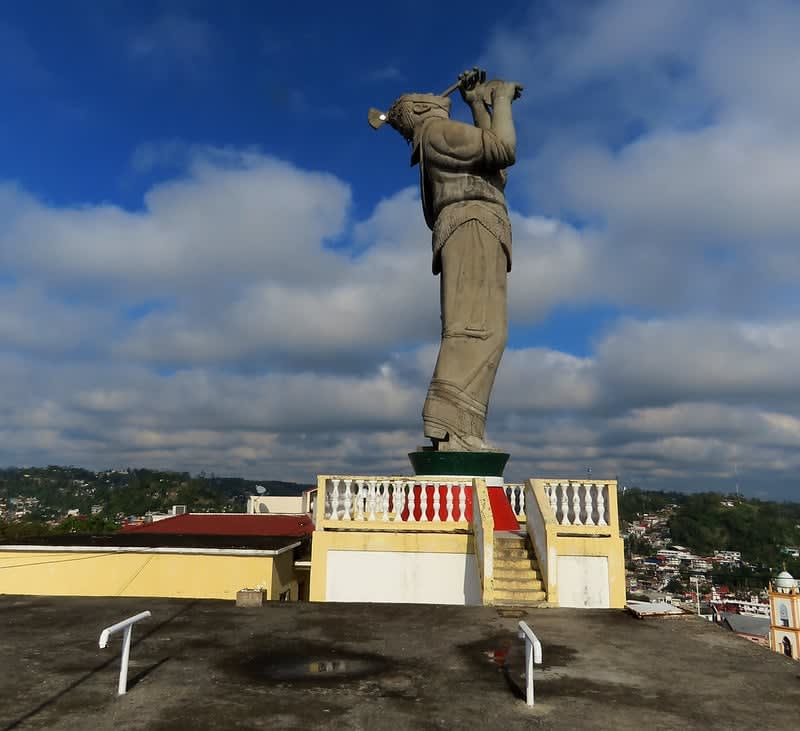
There are two good reasons to visit the Monumento al Volador, located on a hill in the center of Papantla: the beauty of the sculpture and the spectacular view of the Magical Town from there.
This work by Papantla artist Teodoro Cano García, dedicated to the indigenous people who risked their lives in the fertility rite, shows a caporal de cuadrilla playing the flute, dressed in his characteristic costume.
Visit Papantla’s Museum
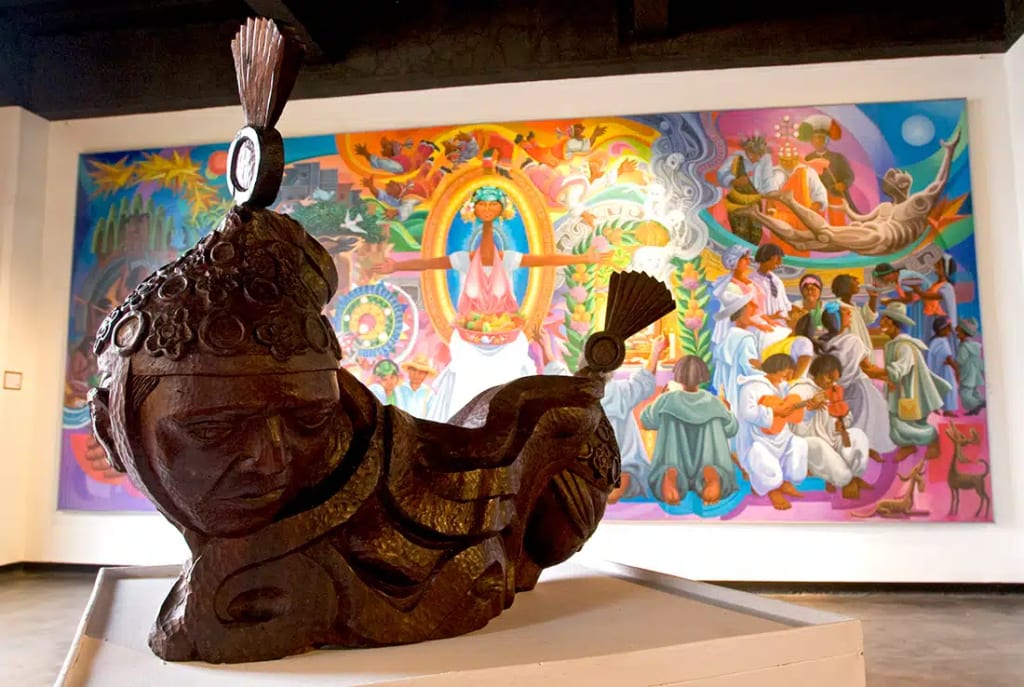
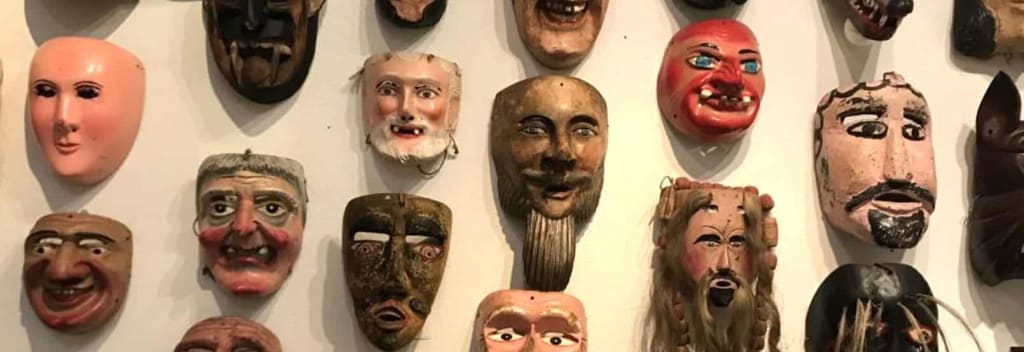
The Centro Cultural Teodoro Cano, named after the notable Papanteco sculptor and author of the major large-scale artistic works that grace the town, opened in 2007 in downtown Papantla.
The center has a museum showing 22 works made with different techniques by the master Cano García and original pieces and replicas of pre-Hispanic objects.
Some of its most attractive spaces recreate different aspects of Totonaca culture, such as its cuisine and traditional clothing.
Another interesting Papanteco museum is the Museum of Masks.
The use of masks in dances, rites, and traditional ceremonies has been firmly rooted in Mexican popular culture since pre-Hispanic times.
They are made of wood, leather, cardboard, wax, and paper-mâché and are part of the colorful clothing used in typical dances.
15 km from Papantla Veracruz, in the community of San Pablo, there is a curious Museum of Masks in which more than 300 pieces from Mexico and other regions of the world are exhibited.
Admire the Archaeological site of El Tajin
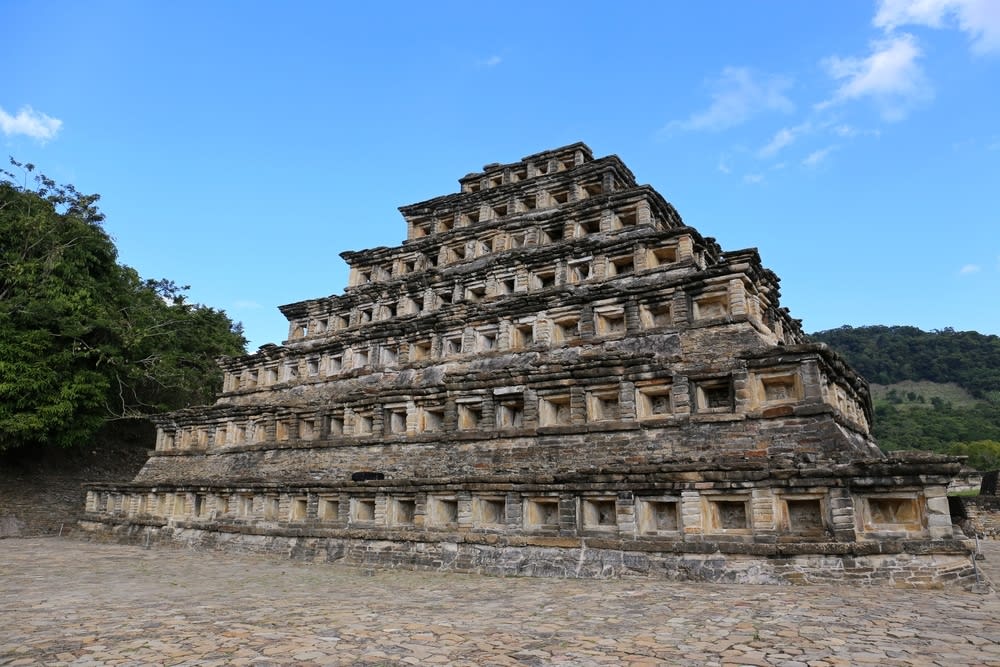
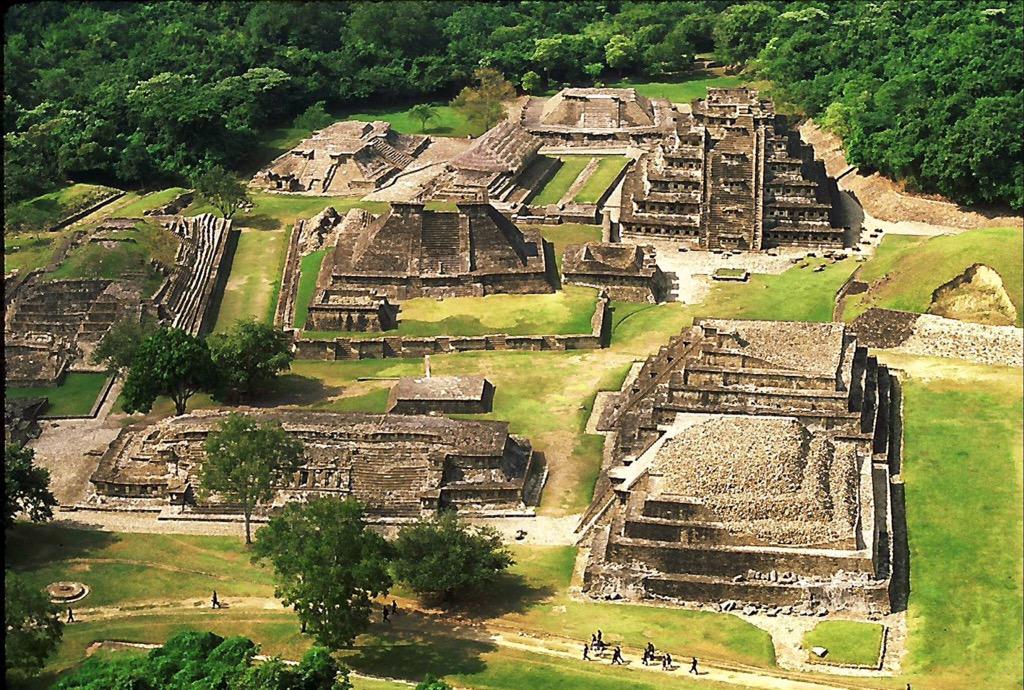
It is believed that this archaeological site, located 9 km from Papantla, was the capital city of the Totonaca empire, living its most extraordinary splendor between the IX and XII centuries.
El Tajin was the largest pre-Hispanic city on the northern coast of the Gulf of Mexico, although it was already uninhabited when the Spaniards arrived.
Its main structures are the Grupo del Arroyo, the Tajín Chico, two courts for the Ball Game, Buildings 3, 23, 15, and 5, and the imposing Pyramid of the Niches.
Another hypothesis indicates that they could have been spaces destined to place candles or torches to illuminate the city.
This Pyramid is the most important, best-preserved, and most architecturally curious building of the archaeological site of El Tajin, which has seven levels and is 18 meters tall.
It receives its name from the 365 niches arranged in its four faces, believing each represents a day of the year, perhaps in a calendar.
El Tajin site museum

Inside the archaeological site is the Museum of El Tajín, a space inaugurated in 1995 with two differentiated areas.
In the first one, the sculptures found during the excavations and some models that architecturally reconstruct what the pre-Hispanic city was like are exhibited.
The second section explains the way of life of the Totonaca civilization in pre-Columbian times.
The Papantla Vanilla from Veracruz
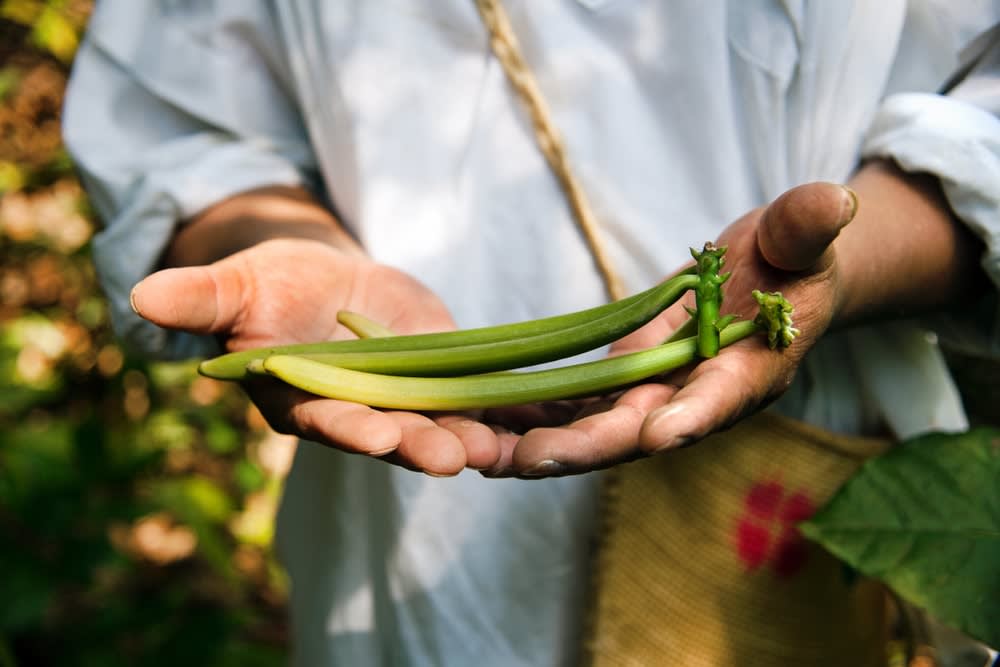
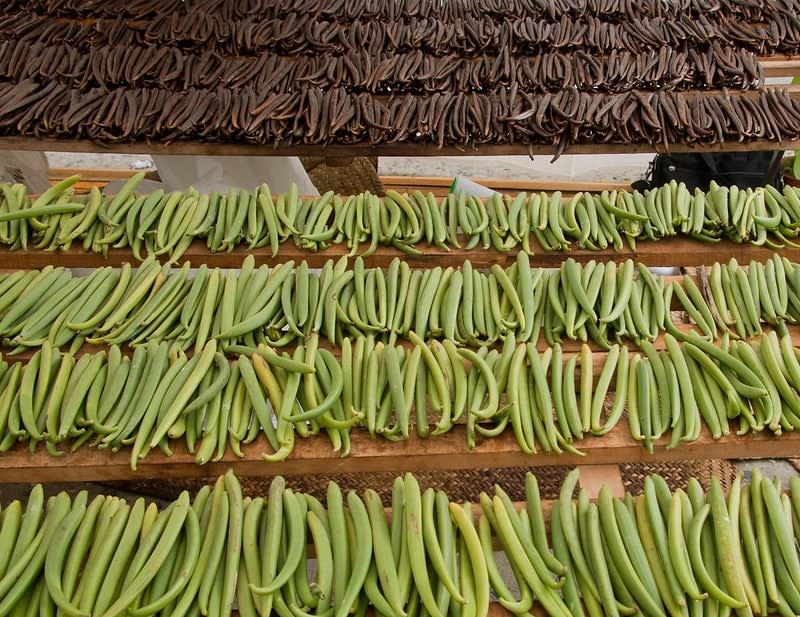
Veracruz Mexico is known not only for its vast and delicious coffee production but also for vanilla.
You may not know that vanilla is a genus of orchids. One of the best-known species, Vanilla planifolia, is native to Papantla, producing fruit widely used as natural flavoring.
Although native to the town, the species grows in other parts of Mexico and the world.
To differentiate it commercially worldwide, Mexican vanilla has the denomination of origin “Vainilla de Papantla.”
The Xanath Ecological Park was created in Papantla by a family headed by José Luis Hernández de Cuir to show visitors the ecosystems surrounding the vanilla plant and other species, such as the flying stick, the chote, a medicinal and food plant from Veracruz.
The park is lush with vegetation and has an area equipped with ropes that you can use to overcome some of the unevenness of the terrain.
There is also a Totonaca house with temazcal and other primitive elements.
Get a souvenier from Papantla Veracruz
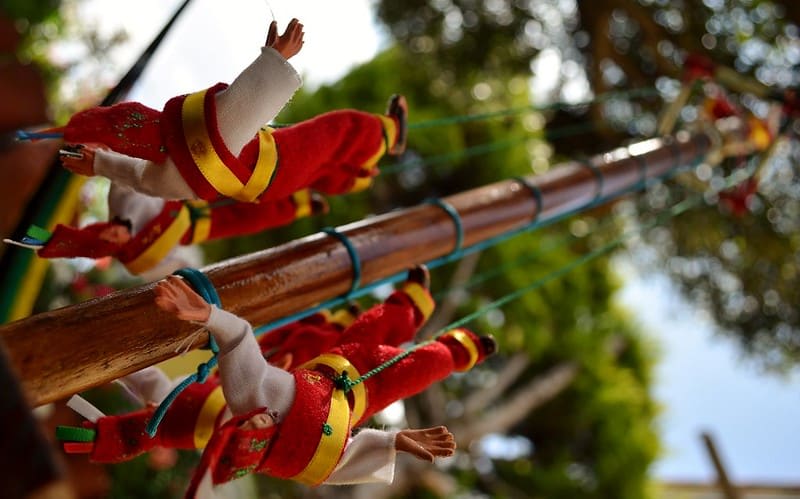
In Papantla, there is an artisan tradition, both artistic and culinary, around the vanilla, with which figurines are made using its pod, and liquors and creams are elaborated.
The “Papantecos” are skilled at weaving the palms that grow in the fields, making baskets, hats, bags, fans, and sandals.
The rite of the Voladores is another field of the ingenuity of popular artists, who make pre-Hispanic flutes and miniature dancers with clay and wood.
Try the local food:
The food of Papantla is varied, standing out the recipes based on pork, chicken and turkey, bean tamales, Chaga mushroom empanadas, bocoles stuffed with chicken, beans in broth with peas, and beans in “alchuchut.”
Pumpkin and almond eggs are popular sweets, always flavored with authentic Papantla vanilla.
Locals also enjoy atoles of various hot and cold flavors and cafe de olla.
Papantla Veracruz hotels
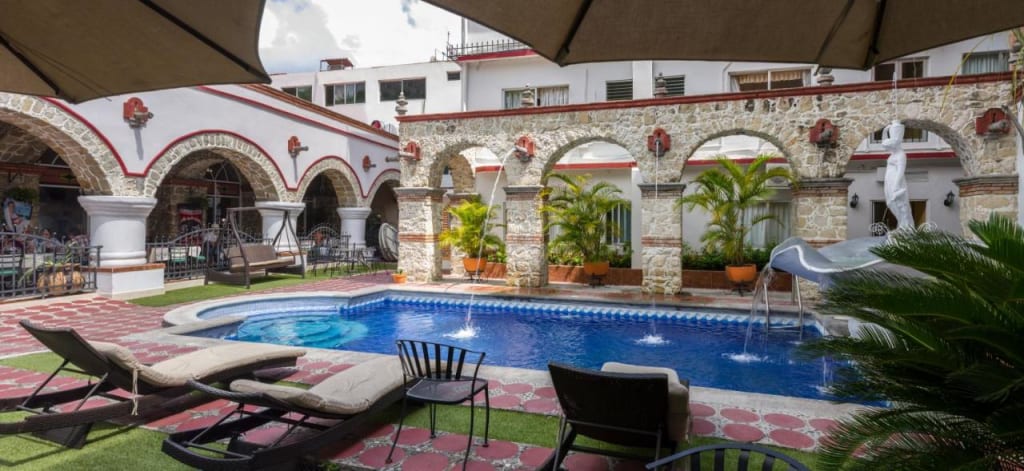
- Hotel Tajín is well located in the center of Papantla, with basic services and excellent attention
- Hotel Casa Blanch, at Benito Juárez 305, is a modest lodging but clean, cozy, and with excellent service
- Hotel Provincia Express, located at Enríquez 103, is close to El Tajín, and from its balconies, you can see the Voladores dance performed in the ancient Totonaca city
Other lodging options in Papantla de Olarte are Hotel La Quinta de Los Leones and Hotel Familiar Arenas.
Where to eat?
- Restaurant Plaza Pardo, in front of the plaza, has Mexican, Latin American, and Spanish dishes on its menu and has a privileged view of the Voladores show
- Nakú offers Mexican food, seafood, and grill, and they offer a vanilla craft beer
- Ágora Restaurant, located at Libertad 301, offers an excellent panoramic view and is praised for its good seasoning and reasonable prices
- La Boca is an Argentinean restaurant